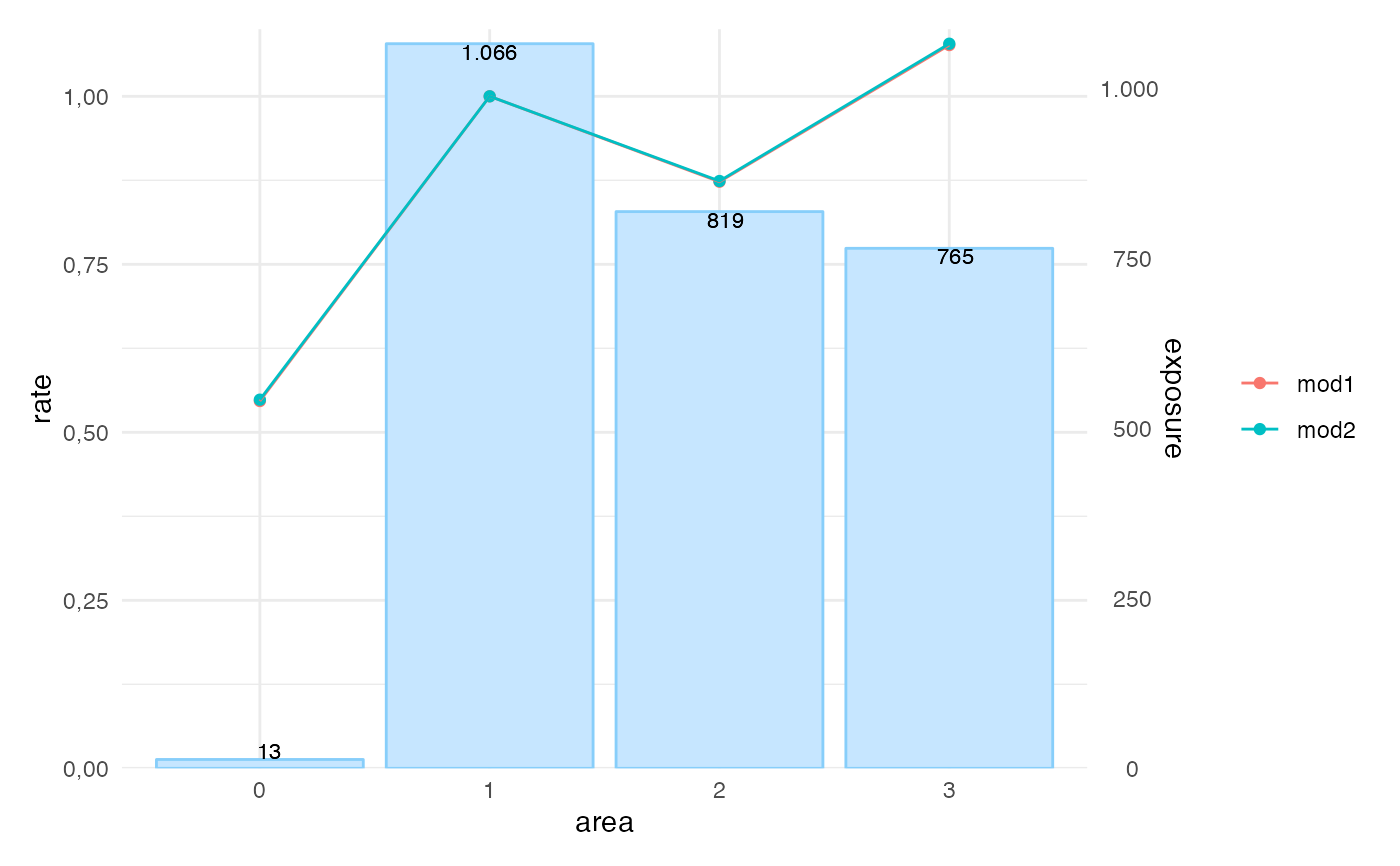
Automatically create a ggplot for objects obtained from rating_factors()
Source:R/model_rating_factors.R
autoplot.riskfactor.RdTakes an object produced by rating_factors(), and plots the
available input.
Usage
# S3 method for class 'riskfactor'
autoplot(
object,
risk_factors = NULL,
ncol = 1,
labels = TRUE,
dec.mark = ",",
ylab = "rate",
fill = NULL,
color = NULL,
linetype = FALSE,
...
)Arguments
- object
riskfactor object produced by
rating_factors()- risk_factors
character vector to define which factors are included. Defaults to all risk factors.
- ncol
number of columns in output (default is 1)
- labels
show labels with the exposure (default is TRUE)
- dec.mark
control the format of the decimal point, as well as the mark between intervals before the decimal point, choose either "," (default) or "."
- ylab
modify label for the y-axis
- fill
color to fill histogram
- color
color to plot line colors of histogram (default is "skyblue")
- linetype
use different linetypes (default is FALSE)
- ...
other plotting parameters to affect the plot
Examples
library(dplyr)
#>
#> Attaching package: ‘dplyr’
#> The following objects are masked from ‘package:stats’:
#>
#> filter, lag
#> The following objects are masked from ‘package:base’:
#>
#> intersect, setdiff, setequal, union
df <- MTPL2 |>
mutate(across(c(area), as.factor)) |>
mutate(across(c(area), ~biggest_reference(., exposure)))
mod1 <- glm(nclaims ~ area + premium, offset = log(exposure),
family = poisson(), data = df)
mod2 <- glm(nclaims ~ area, offset = log(exposure), family = poisson(),
data = df)
x <- rating_factors(mod1, mod2, model_data = df, exposure = exposure)
autoplot(x)
